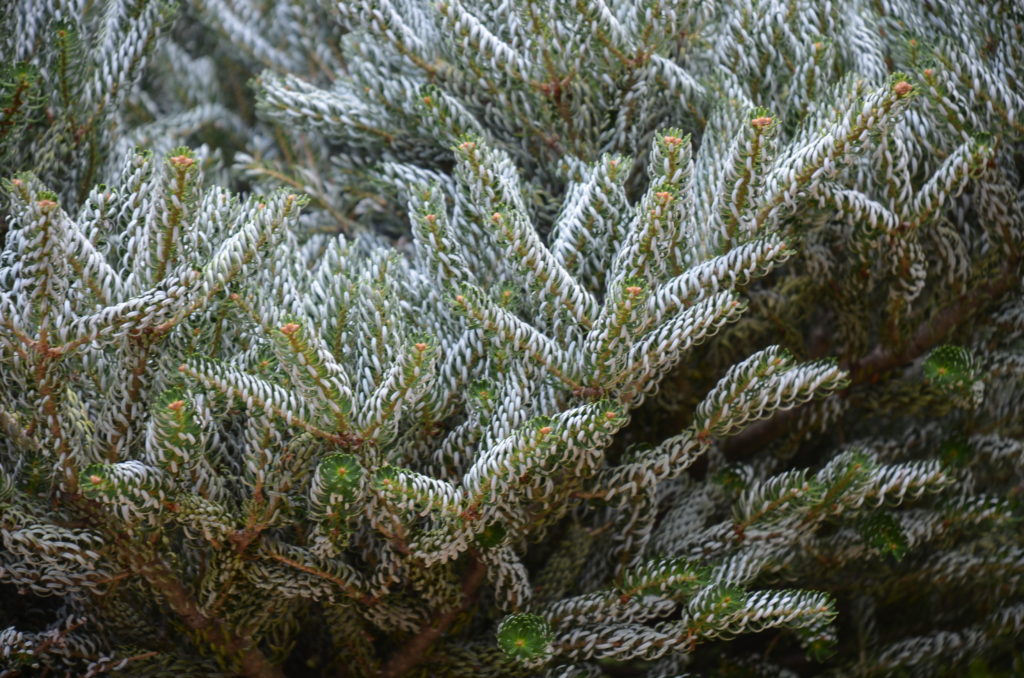Korean fir (Abies koreana) is slow-growing compact fir species with a mature height between 15 to 30 feet tall and 6 to 15 feet wide. Its tiny needles are ½- to 1- inch long, green on top and two white stripes on the underside. It bears 2-3 inches long erect purple cones almost annually that mature to tan color in fall. Unlike other conifers, the cones
stand upright on the top of branches.

Dwarf cultivars of Korean firs are favorites among many conifer collectors (USDA hardiness zones 5-8). These ultra-dwarf varieties grow inches per year. To encourage a deep extensive root system, extra care (TLC) is needed the first 2-3 years after planting in the garden.
Plant in a humus-rich, acidic, well-drained soil and in a sun to partial shade garden bed. Mulch with acidic organic compost such as pine needles, shredded pine bark, or chips. Irrigate once or twice monthly during periods of drought, heat or high winds.
‘Horstmann’s Silberlocke’ is the leading Korean fir variety among conifer collectors. The German word silberlocke means “silver locks of hair”. The needles on the branches curl on the tops exposing the white underside of the needles, resulting in a frosted look. Annual growth rate is 6 – 8 inches (15 – 20 cm). Over the years, ‘Horstmann’s Silberlocke’ will develop into a small 12 feet high x 8 feet wide landscape tree. The curling needle trait is often lost as the plant age. ‘Silberlocke’ also produces purple/tan cones on young plants.
‘Cis’ grows very slowly into a round (globose) compact bun with glossy dark green needles with silvery undersides. After 10 years of growth, a mature specimen will measure 16 inches (40 cm) tall and wide.
‘Silver Pearl’ (‘Silberperle’) is a slow-growing globe-shaped cultivar with green needles above and silvery needle on underside along with a slight twist. Its very conspicuous winter buds are described as small pearls, hence its name. Ultra-dwarf annual growth rate is only 2 to 3 inches (5 – 7.5 cm) resulting in a squat 2 feet (60 cm) tall and 18 inches (45 cm) wide conical tree after 10 years.
‘Kohout’s Icebreaker’ is a superb new introduction with curled needles revealing brilliant white reverse. (8-12 x 12-18 inches tall and wide after 10 years.
Korean fir appears to be more heat tolerant than other firs, but it prefers cooler regions of the U.S. As with most firs in the South, Korean fir will often fail if too hot and will fail in wet soppy soils. In the warm humid southeastern U.S. environment, Korean fir should be grafted on Momi fir (Abies firma) rootstock. Dwarf forms make great additions to a small urban garden, a rockery, or a large container. Korean fir is rated as deer resistant.
Because of their rates of growth, super dwarfs are investments in the future. A plant with some size will likely command a premium price.

 Posted in
Posted in 
